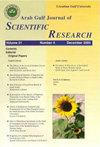通过对埃及成年人的正常踝关节进行放射学检查,对侧面、性别和年龄进行人体测量学评估
Q4 Business, Management and Accounting
引用次数: 0
摘要
目的:性别和年龄的估计是很重要的,特别是在无法获得死者信息的情况下。有有限的放射学研究调查侧面,性别和年龄在正常踝关节形态测量参数的差异。作者的目标是评估不同的踝关节形态测量和埃及人之间的文件差异。设计/方法/方法对203名(100名男性和103名女性)年龄在20-69岁之间的埃及成年人进行了为期23个月的前瞻性研究,他们接受了双侧正常踝关节的x线平片检查。除跗宽度(TaW)右侧明显高于左侧(26.92±2.66 mm vs 26.18±2.65 mm)外,两组间踝关节参数差异无统计学意义。除距骨高度(TaH)和前后间隙(APG)(2.29±0.80 vs 1.80±0.61 mm)和距骨高度(13.01±1.68 vs 11.87±1.91 mm)显著高于雌性外,雄性的形态测量值显著高于雌性。老年组胫骨弧长、APG、距榫前极限的MTiTh水平距离、距榫顶点的MTiTh水平距离、胫骨距距顶点的矢状距离、滑车弧矢状半径均显著高于青年组。老年组胫骨宽度、踝宽度、TaW、TaH均较年轻组明显减小。创意/价值两侧踝关节多对称;然而,由于性别和年龄因素,大多数形态测量值存在显著差异。这些发现在侧面、性别和年龄的确定中可能是必要的。本文章由计算机程序翻译,如有差异,请以英文原文为准。
Anthropometric evaluation of side, sex and age by radiological examination of the normal ankle joint among adult Egyptian population
PurposeSex and age estimation is important, particularly when information about the deceased is unavailable. There are limited radiological studies investigating side, sex and age differences in normal ankle morphometric parameters. The authors’ goal was to evaluate different ankle joint morphometric measurements and document variations among Egyptians.Design/methodology/approachA prospective study was conducted throughout 23 months on 203 (100 males and 103 females) adult Egyptians, aged between 20-69 years old, who were referred for a plain x-ray of bilateral normal ankle joints.FindingsAnkle parameters showed no statistical difference between both sides, except for tarsal width (TaW) which was significantly higher on right than left side (26.92 ± 2.66 vs 26.18 ± 2.65 mm). Males showed significantly higher morphometric values except for anteroposterior gap (APG) and talus height (TaH) which were significantly higher in females (2.29 ± 0.80 vs 1.80 ± 0.61 mm and 13.01 ± 1.68 vs 11.87 ± 1.91 mm, respectively). There was significant increase in tibial arc length, APG, distance of level of MTiTh from anterior limit of mortise, distance of level of MTiTh from vertex of mortise, sagittal distance between tibial and talar vertices and sagittal radius of trochlea tali arc in old age group compared to young one. A significant decrease in tibial width, malleolar width, TaW and TaH was noted in old age group compared to young one.Originality/valueAnkle joints of both sides are mostly symmetrical; however, there are significant differences in most morphometric values due to sex and age factors. These findings may be essential during side, sex and age determination.
求助全文
通过发布文献求助,成功后即可免费获取论文全文。
去求助
来源期刊

Arab Gulf Journal of Scientific Research
综合性期刊-综合性期刊
CiteScore
1.00
自引率
0.00%
发文量
0
审稿时长
>12 weeks
期刊介绍:
Information not localized
 求助内容:
求助内容: 应助结果提醒方式:
应助结果提醒方式:


